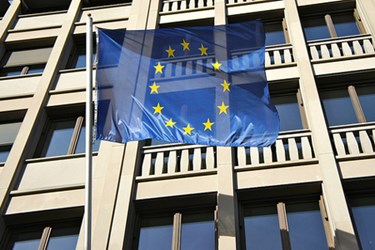Europe Seeks More Convergence With U.S. Regulating Medical Devices

In an effort to “cut red tape and costs without cutting corners,” the European Commission is seeking more cooperation with the U.S. regulatory agencies in several key business sectors, including medical devices. The talks — which are part of the Transatlantic Trade and Investment Partnership (TTIP) — are ongoing and are expected to address unique device identifiers (UDIs), data submission, device standards, and exchange of information regarding noncompliant devices.
The TTIP has been under negotiation since 2013 and is expected to be finalized by 2020, and its goal is to improve market access for both U.S. and E.U. manufactured goods and services by adding greater compatibility and transparency. Policies fostered under this agreement currently support 13 million American and E.U. jobs, according to a U.S. government website.
In negotiating texts and proposals submitted by the E.U., the European Commission expressed its desire to reduce some of the overlap in medical device regulation by converging “technical and clinical requirements” and quality management system audits. By implementing these actions, the E.U. aims to make devices more accessible and traceable without sacrificing safety standards.
“Cooperation activities between the Parties shall aim at improving, and not reducing, undermining or otherwise compromising, the level of protection in public policy areas such as the protection of workers’ and consumers’ health, public health, and the protection of the environment, as considered appropriate by either Party,” said the European Commission in a proposal for an annex on medical devices.
To accomplish its goals, the E.U. would like both regulatory bodies to align their policies more closely with the International Medical Device Regulators Forum (IMDRF), as well as other device-related organizations of which both are a member, including the International Electrotechnical Commission, and the International Organization for Standardization (ISO).
The E.U.’s annex specifically cited the IMDRF’s ongoing work to establish globally accepted UDI systems for medical devices. Cooperation with the IMDRF’s guidance on UDIs is imperative — according to the document — in order to ensure interoperability of each agency’s database by establishing consistent data submission protocols.
In addition, the E.U. proposes that all information regarding post-market safety and recalls be shared through the National Competent Authority Report Exchange Program system, which is operated by the IMDRF. The annex further stipulated that the regulatory bodies would exchange regulatory information, but would do so in a manner that protected “confidential information of commercial, technical, or scientific nature, including trade secrets, which is not in the public domain.”
Under the terms of the potential agreement, both the U.S. and E.U. would endeavor to cooperate in all emerging areas of medical technology and ensure that these policies were upheld at the political level.
TTIP documents stipulated that discussions between the U.S. and E.U. would not interfere with the ongoing development of the Medical Devices Regulation (MDR), introduced by the E.U. to overhaul existing legislation. Policies submitted by the European Council suggested that new approaches to regulation in Europe would be stricter than they had been in the past.
A recent study conducted by Harvard researchers implied that devices approved by the FDA first, rather than by E.U. regulators, were safer than those that entered the European market before coming to the U.S.
